Welcome back friends. In Part 1 we looked at how wayward birders can survive the avian desolation of July by training their binoculars on some colourful insects known as “butterflies”. Did you try it? Was it good for you?
Well maybe you’re the sort of person who’s too cool for butterflies. Or maybe you’ve breezed through butterfly identification and you’re thirsty for something more challenging. Well maybe you should shut your mouth, it’s not polite to brag Mr. Smartie McCoolguy.
Regardless, take solace in knowing that there’s a cooler, more challenging, and all-round better group of insects for you to dive into. One that doesn’t conjure images of six-year-olds frolicking through meadows with butterfly nets. Yes, on this episode of TTALBbAB (that’ll catch on) we’ll be taking a look at dragonflies. Oh and damselflies too, I guess.
It seems pertinent now to revisit our aforedetermined criteria for a summer birding surrogate. You will recall that:
- It must be outdoors. Dragonflies live outdoors. Check.
- It must involve pursuit. Dragonflies are some of our fastest-flying insects. Get your running shoes out of the closet.
- It must have a system of identification and organization. We’re good here too, as there are some excellent field guides available (see bottom). Most dragons and damsels can be identified in the field with binoculars, or via careful photography. There are some exceptions, but we’ll just cruise past those for now.
And we’re rolling. Since most folks are a little less familiar with these critters than with butterflies, a general introduction may be in order.
Dragonflies and damselflies are two closely-related groups of insects that comprise an order called Odonata. Or “the odonates”. Or “odes” for short, if you’re…you know…a dork. This is a very old group of insects (pre-dating the dinosaurs by a country mile) and as such they lack the complex, origami-esque wing folding mechanism of many others. This means their wings are just sticking right out there all the time, and as there are few other groups of insects for which that’s the case¹ it makes them pretty recognizable.
Odonates have a simpler, older flight-muscle arrangement than most other insects too. Think of it as owning a 90s supercar with none of the newfangled, electronic wizardry that makes today’s Ferraris so sophisticated. Except in this case the old Testarossa stomps the new muscle on the track. With their antiquated flight mechanics dragonflies are quicker and more nimble than almost every other insect in the air. Posers need not apply.
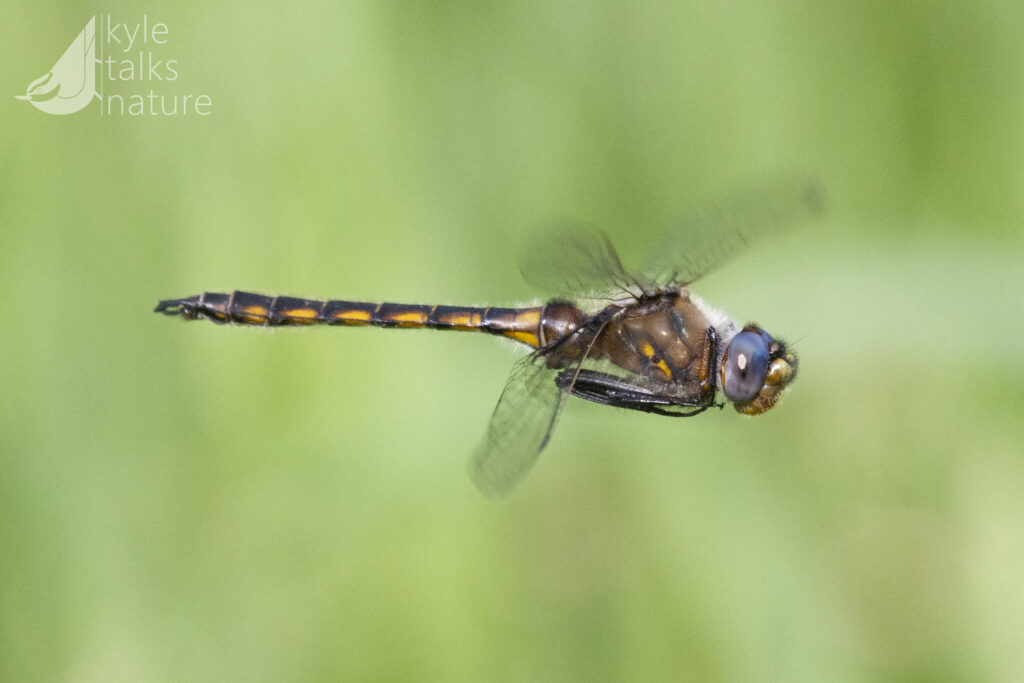
These impressive aerial abilites are useful for odes, as all species are predators. Yes even the small, dainty ones. They are predators as winged adults and they are also predators as aquatic nymphs, patrolling the bottoms of ponds and streams in search of (mostly) other insect babies to devour.
Now that we know what sort of monster we’re dealing with (are you sold yet?) we should also address the critical distinction between the two groups. Fortunately, it ain’t that hard.
Dragonflies, as their name suggests, tend to be larger, fly faster and have thick, robust bodies. Many – though not all – have eyes that touch each other at the centre of their heads. At rest, they sit with their wings flat and perpendicular to their bodies. Except when they don’t. But like, usually.
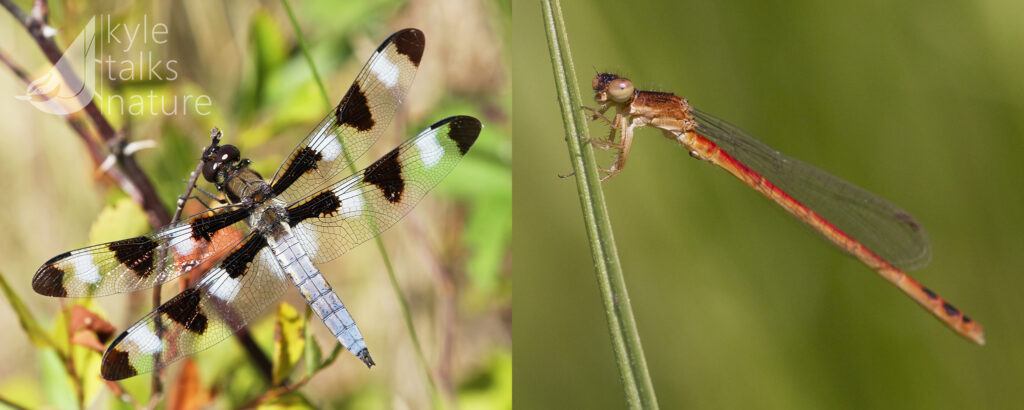
Damselflies, as their name suggests, are small and delicate. They have dainty, slender bodies and fly more slowly. They sort of float about. They have eyes on the side that do not touch each other (think Hammerhead Shark). At rest their wings are held together over their back. Except when they’re not. You get it.
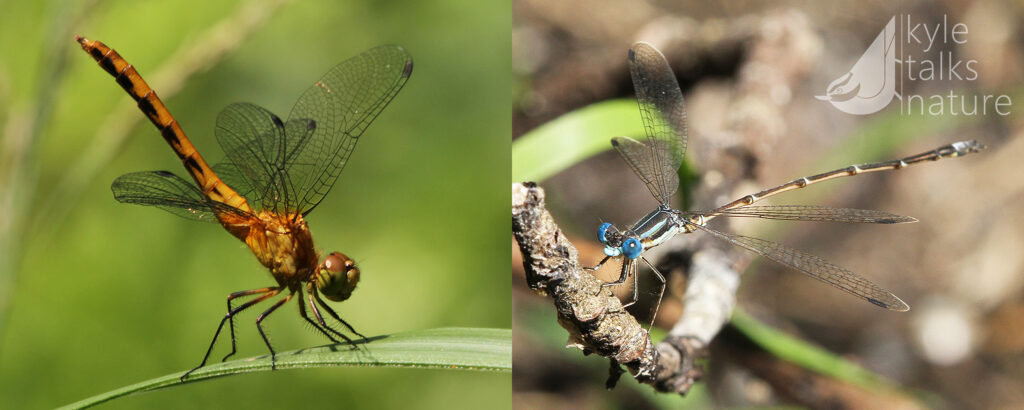
Once you’ve got a handle on this major division, you’re prepared to get down to the nitty-gritty. Since odes are a little trickier to wrap your head around than butterflies, a family-by-family approach is best. The good news – if you’re a birder – is that while there are dozens of bird families in North America there are only ten groups of dragons and damsels.
1. Skimmers
When I take new birders (or non-birders) out birding, I always take them to look at ducks. Waterfowl is the absolute best group of birds for the neophyte. Ducks are big, easy to see and charismatic, but most importantly they almost all have clear, distinctive field marks that can be quickly learned. This means the new birder has some early success, the activity feels rewarding, and they’re more likely to do it again. The abject frustration of gulls can wait until later.
Skimmers are the waterfowl of dragonflies. They’re mostly big, abundant and obvious. Their differences are easy to spot and easy to remember. If you are just dipping your toe into the world of dragonflies, this is the group you should start with.
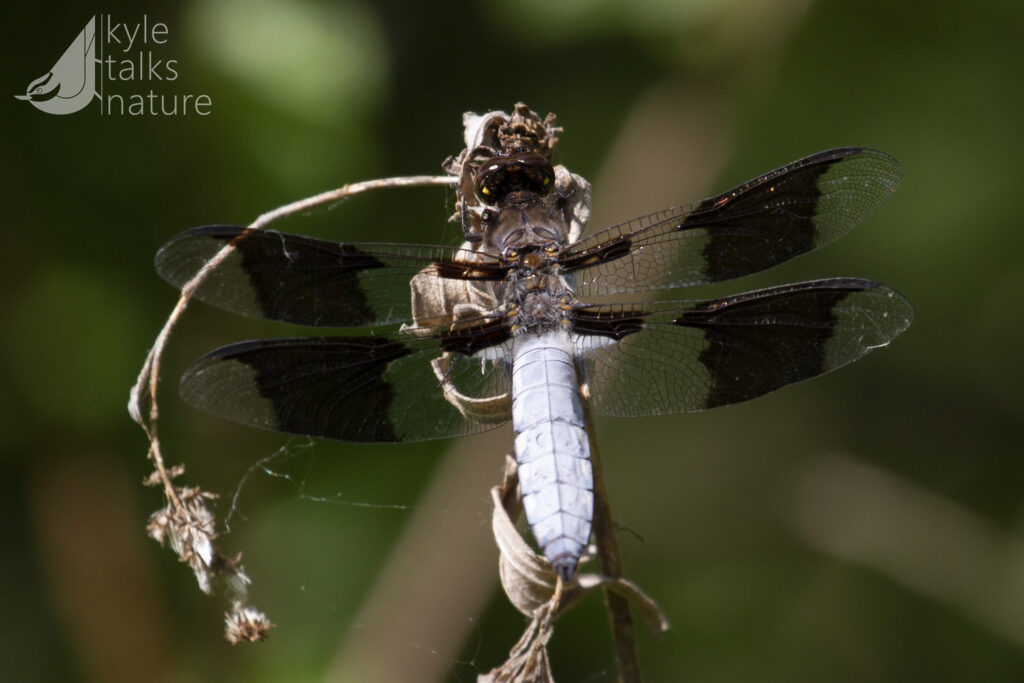
The aptly-named Common Whitetail (above) is the perfect example of this. Look at it. You’ll never forget it. It is the Mallard of dragonflies. Just like ducks, skimmers can be picked out by their compact, chunky bodies. Also just like ducks, you’ll pick up on them so quickly that you won’t have to think about how to tell them from other dragonflies. When you see a Calico Pennant (below), you’ll just skip past family and jump straight to species.
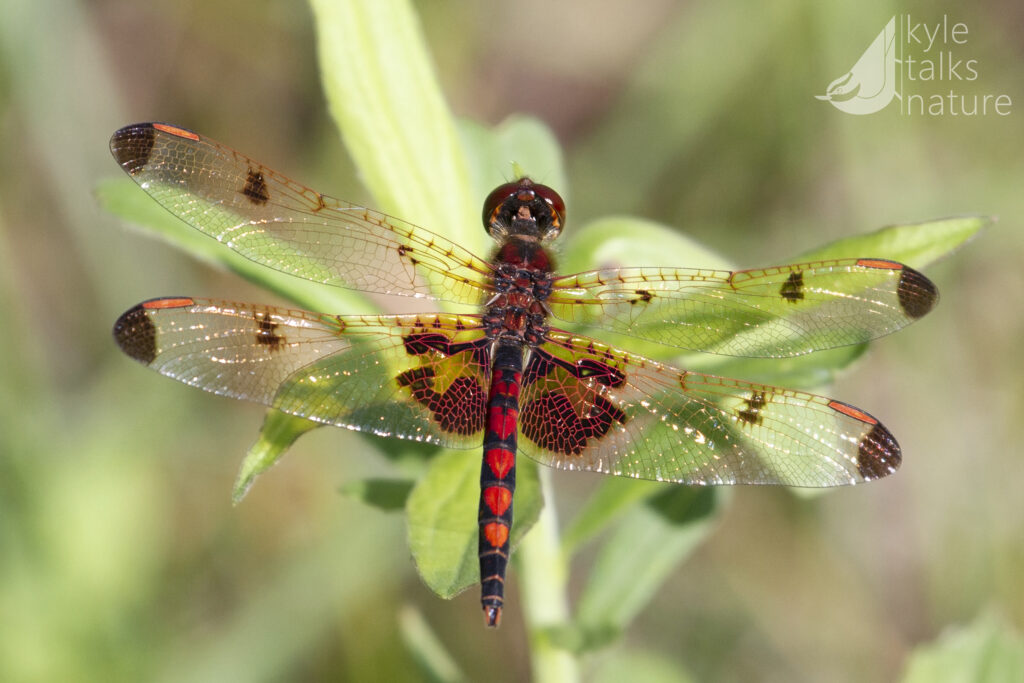
2. Darners
If skimmers are like waterfowl, darners are like raptors. They’re mostly huge. They’re mostly seen in-flight. They’re impressive hunters. They’re extremely charismatic, but they also mostly look similar and so they can be a little tricky to learn.
Common Green Darner (below) is the one to know. Because it’s migratory, it’s often the first dragonfly we see in spring and the last we see in fall, and it’s typically our most common darner all summer long. It is also distinct from the other, more confusing darners because of its solid green thorax and brown or blue abdomen.
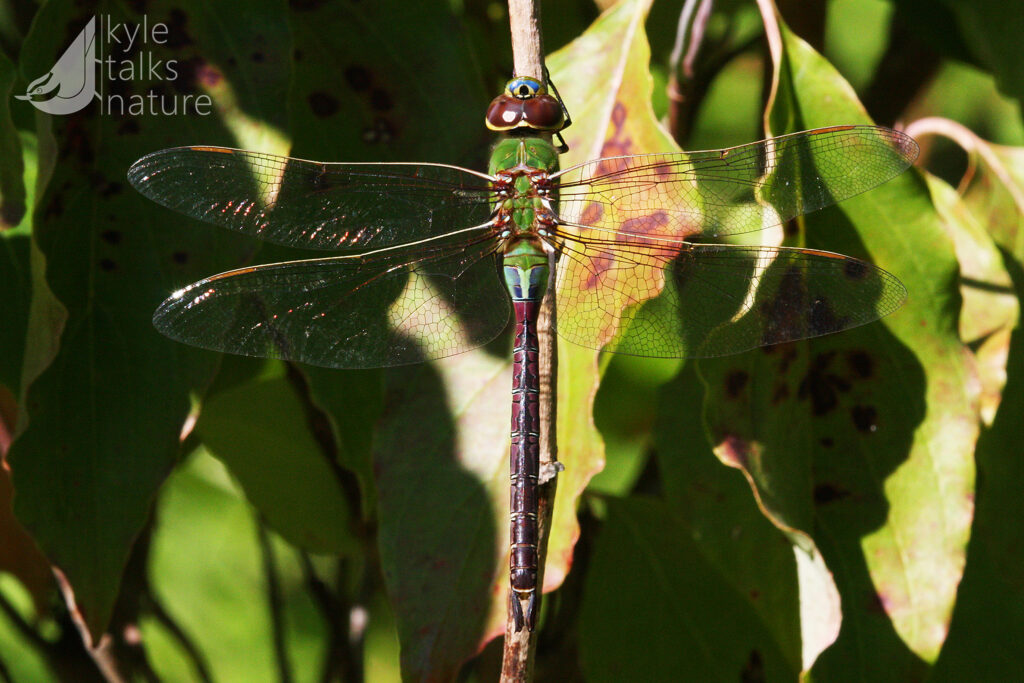
As a group, darners can be picked out from the crowd because of their large size and long abdomen which does not taper or flare. Apparently it’s straight like a darning needle. I wouldn’t claim to know. Most darners are dark in colour and mottled with yellow, green or blue markings. Lance-tipped Darner (below) is a more typical representative of the family.

3. Clubtails
Think about the wood-warblers for a moment. But then completely restrict your thinking to the months between spring and fall migration. Where are they? Sure there’s a couple of species you might find in an urban river corridor or wetland, but mostly they’re outside the city in wilder locales. That’s kinda how clubtails do. Also there’s a bunch of ’em and some are tricky to tell apart. So you know, warblers.
You’re not so likely to see clubtails zipping around town, but get out hiking or paddling or camping and your luck may change. These dragonflies range from smallish to pretty darn big, and are distinguished from most others by eyes which do not touch in the middle. Weird.
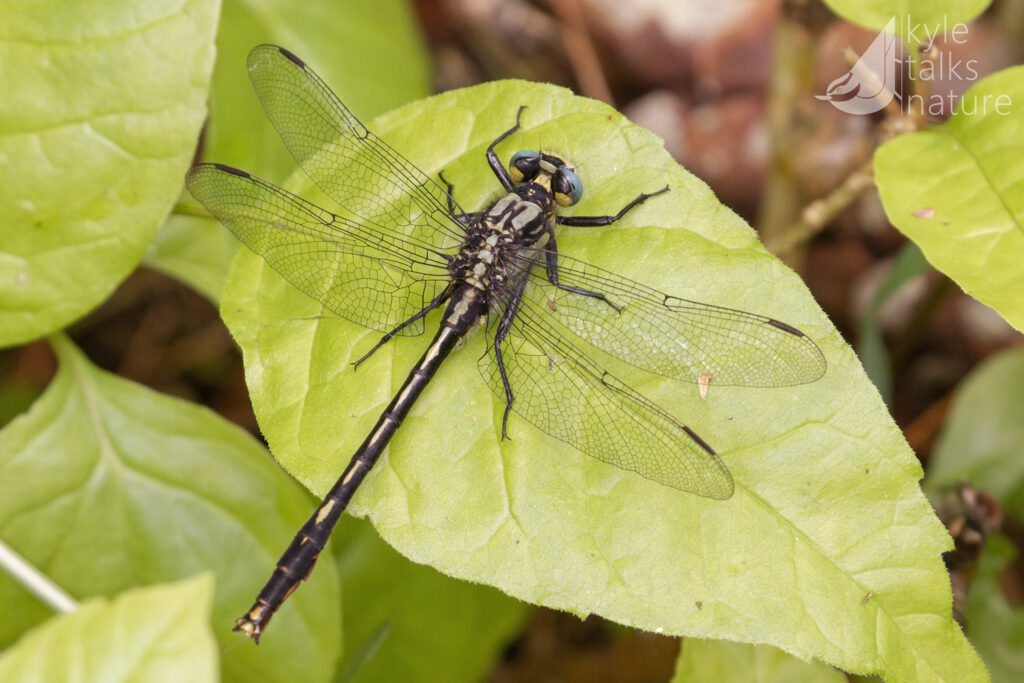
Don’t be tricked into looking for some sort of club-tail. Some species do have one. Others, like the Lilypad Clubtail (above), mostly don’t. Also, some non-clubtails have club-tails, if you know what I mean. Mostly just stick with the eye thing and you’ll be alright.
A short aside here. Dragonflies have some of the coolest names of any animal. There’s Stygian Shadowdragon, Ebony Boghaunter, Wandering Glider, Extra-striped Snaketail, and so on. It’s like taxonomists feel the need for some professionalism when naming big animals that people care about, but when they get to the insects they can really their hair down. Well the coolest of all has just got to be Dragonhunter (below). Dragonhunter is a big honkin’ clubtail that eats – you guessed it – dragons. I mean dragonflies. Other dragonflies.
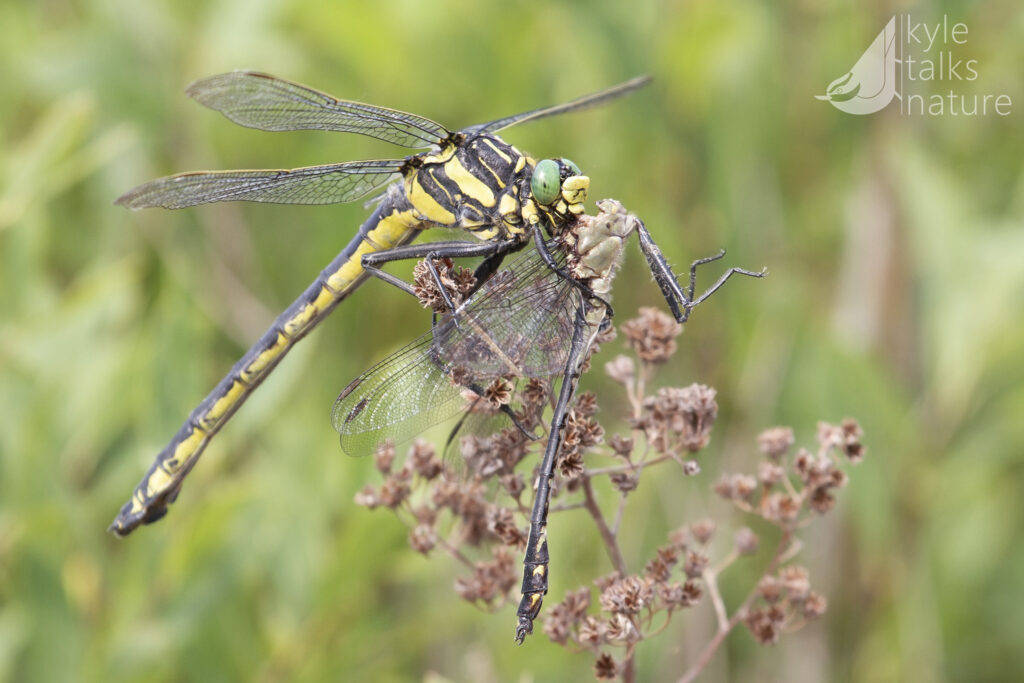
4. Emeralds
It doesn’t take a huge leap of logic to realize that the group called emeralds comprises dragonflies of mostly one colour. That colour is black. Go figure. They’ve got pretty, green eyes though.
Aside from a few common and cooperative species – like Racket-tailed Emerald (below, note the club-tail on a non-clubtail) – emeralds are mostly a pain. They only live in specific places, they are rarely seen perched, many only fly at certain times of day, and only for short chunks of the season. Even if you do see one, they mostly look the same so it doesn’t really matter.
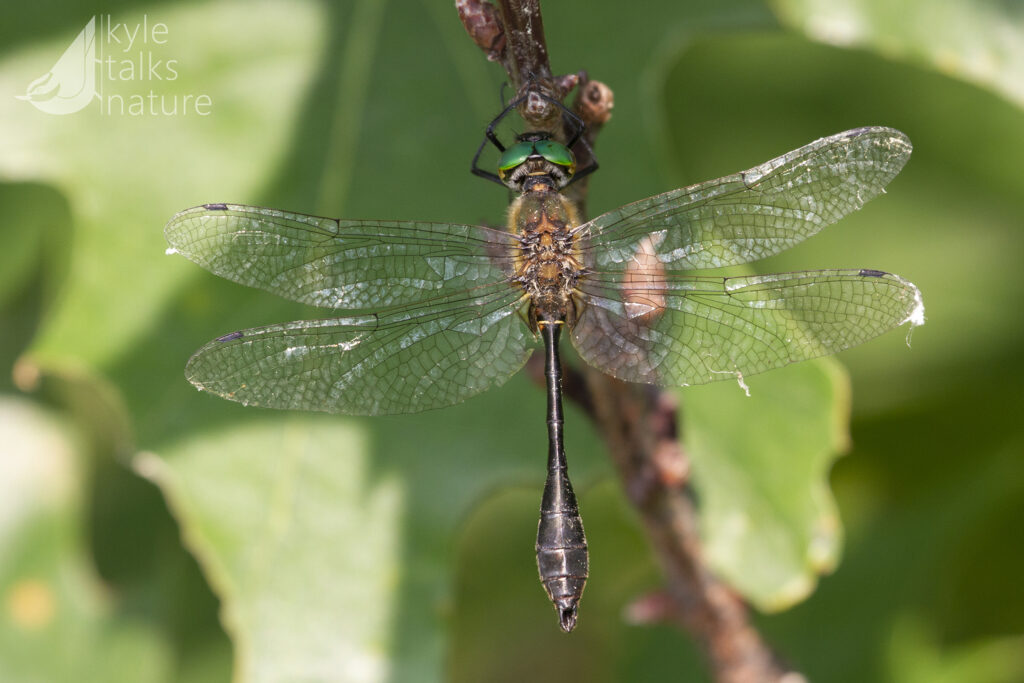
Just like with birds, though, the fact that they’re hard to see will only make you want to see them more. I’m not sure what the exact bird analogy for this is…uncommon pelagics? Inland jaegers? It doesn’t matter.
Weirdly there is one group of emeralds that is unlike the others in every single way. They don’t look like other emeralds, nor do they act like them. They’re the odd cousin that doesn’t belong. They are the baskettails. Cooperative, abundant, often perching, and differently coloured, they are the emeralds you can actually see. Beaverpond Baskettail (below) is often one of our first odes in spring.
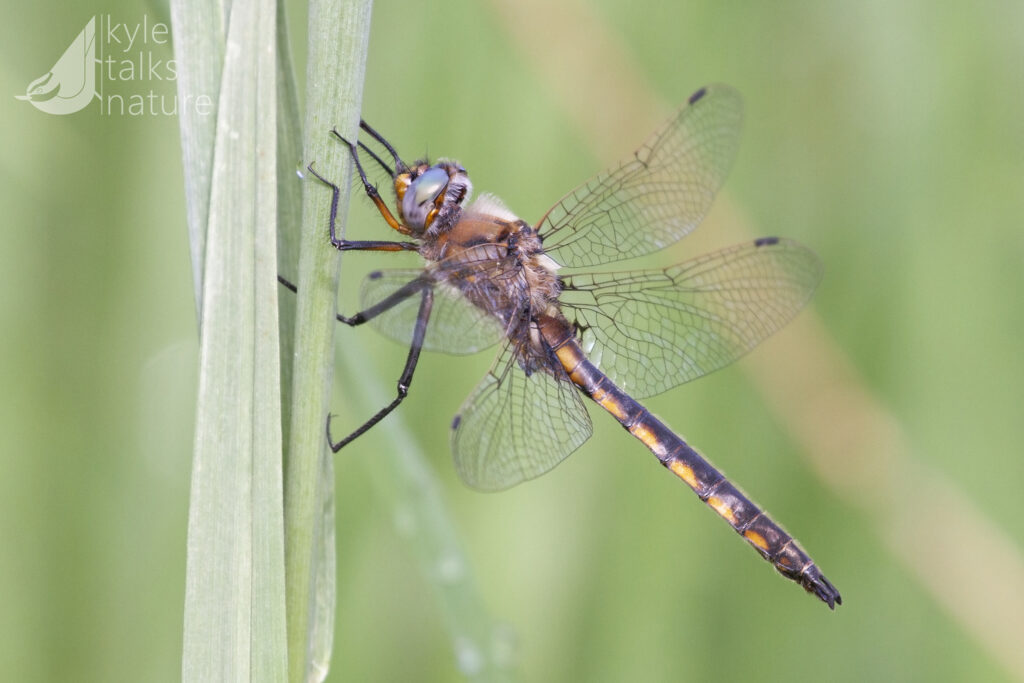
5-7. Cruisers, Spiketails & Petaltails
Ok, hold on tight for a second because we’re gonna breeze though a few groups. The truth about these three is that you’re not super likely to see them, so maybe learn the others first and come back to these later. There aren’t very many species, and most are picky about very specific habitats. Here’s what you need to know:
Cruisers and spiketails are medium-to-honkin’-sized dragonflies which are mostly black with yellow spots, like Swift River Cruiser (below).
There is only one petaltail in North America. It is large and drab. It – like clubtails – has eyes that don’t touch. That is all.
See how painless that was?

8. Broad-winged Damsels
Ok, deep breaths. Are you still with me? We made it through the dragonflies, and there’s just three quick groups of damselflies to go. If you’re still reading you’ve genuinely made my day.
The broad-winged damsels are simply the best damselflies, full stop. They’re big (for a damselfly) and pretty. Most have bold colours and pigmented wings, which makes identification easy. They’re like an incoming tanager when you’re sorting through a tree full of warblers. You’re gonna notice them, and you won’t have to guess what they are.
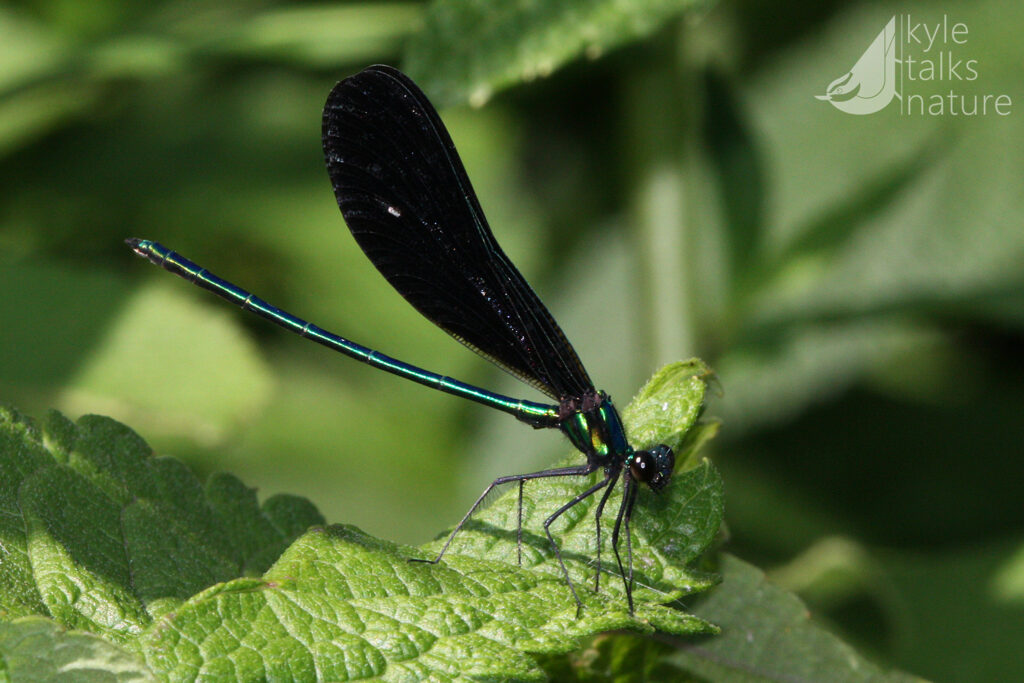
The Ebony Jewelwing (above) is the most commonly encountered broad-winged damsel. Like its cohorts it loves streams and rivers, though it will stray further from them than the others. American Rubyspot (below) is my contender for greatest of all the damselflies, hands down.
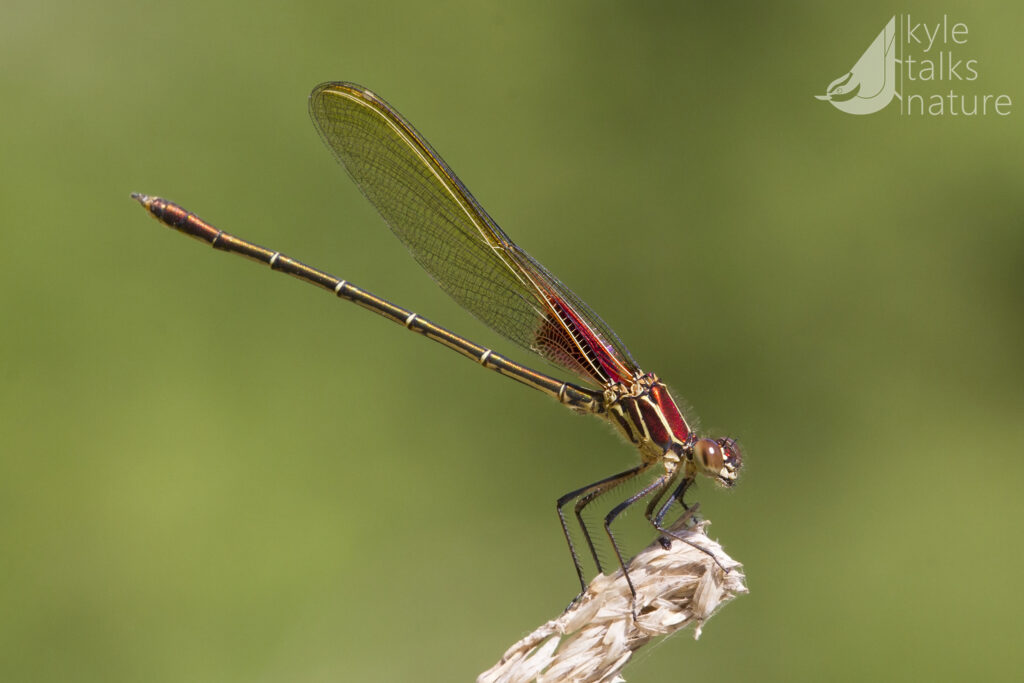
9. Spreadwings
Here’s the thing about spreadwings. They all look basically the same, which is to say boring. You will be uninspired to work towards their identification, which is a problem because identifying them can be very difficult. They’re like Empidonax flycatchers if the flycatchers were mute. Many require close examination of the genitalia for a confident ID. That’s not like flycatchers, but it is a fact.
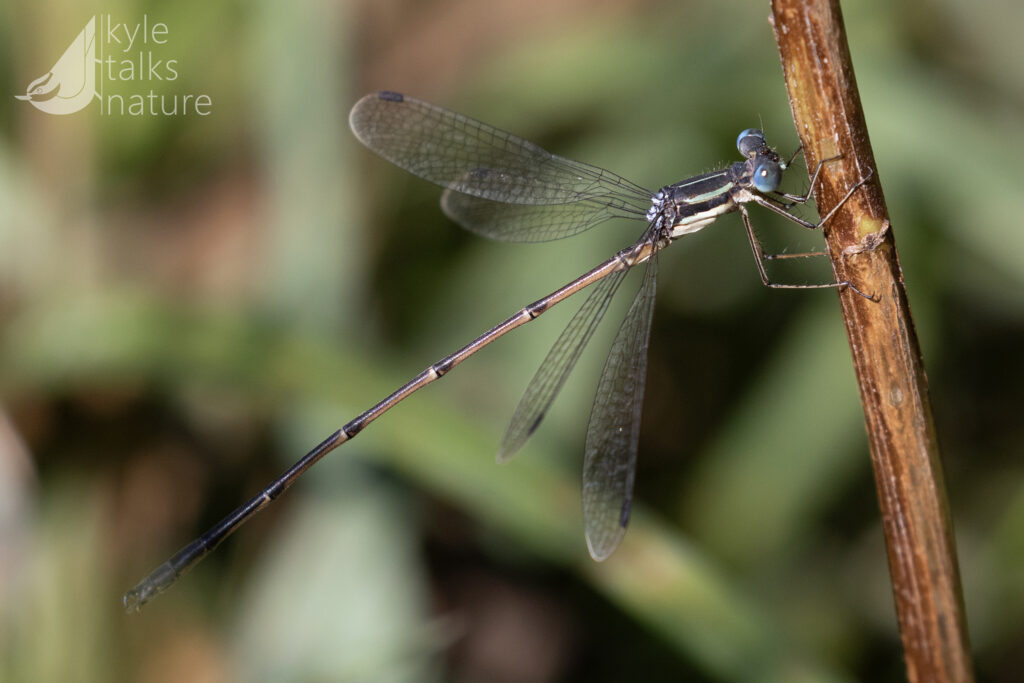
While identifying species is hard, picking spreadwings out of the crowd is easy due to their namesake posture. The Slender Spreadwing (above) has done us the solid of being exceptionally long and slender, thus facilitating identification. The spreadwing below can be whatever species you want it to be.
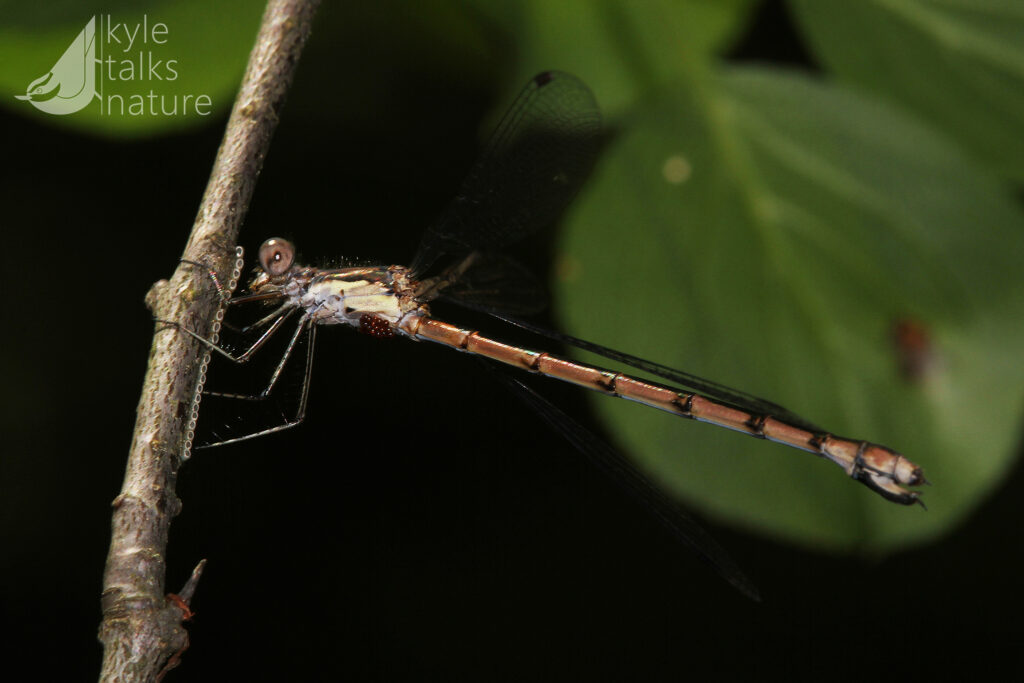
10. Pond Damsels
At last we arrive at the tenth and final family – the pond damsels. Think of these as the wood-warblers of the odonate world. Yes I know I already used wood-warblers several families ago, but it just works dammit. They’re small, often brightly coloured, numerous, and frequently hard to see well. Some identifications are obvious, while others are very difficult to tell apart.

It’s tough to do justice to this diverse family in such a small space, but most small damselflies that you will see fit in here somewhere. Dancers like Variable Dancer (above) are slightly larger and stick pretty close to water. Bluets like Hagen’s Bluet (below) are mostly blue and black (with some exceptions) and can be found basically anywhere.
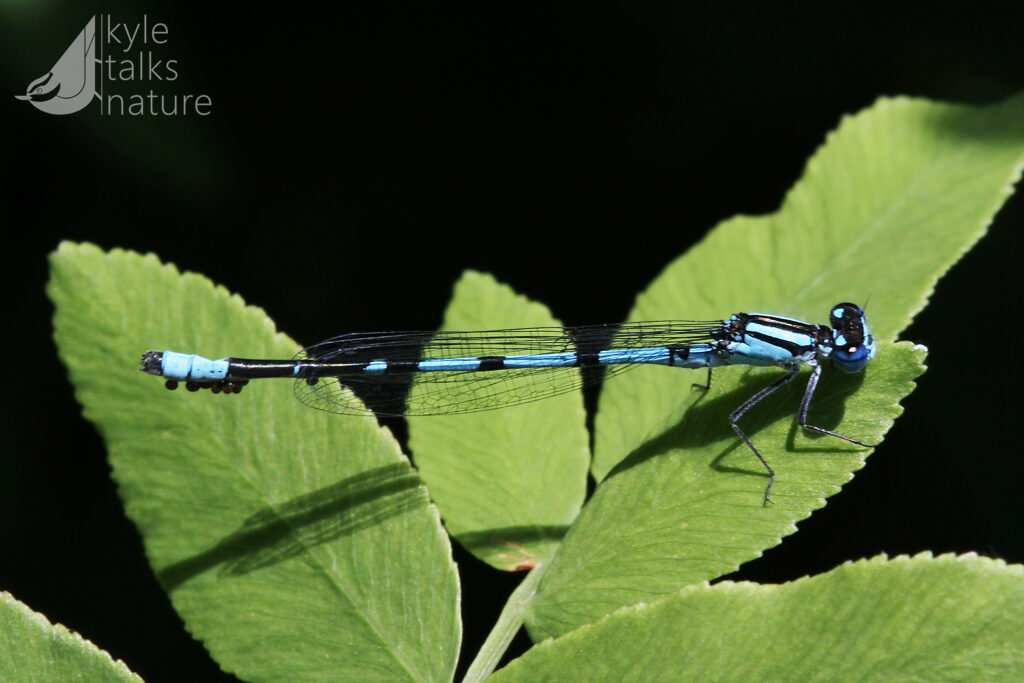
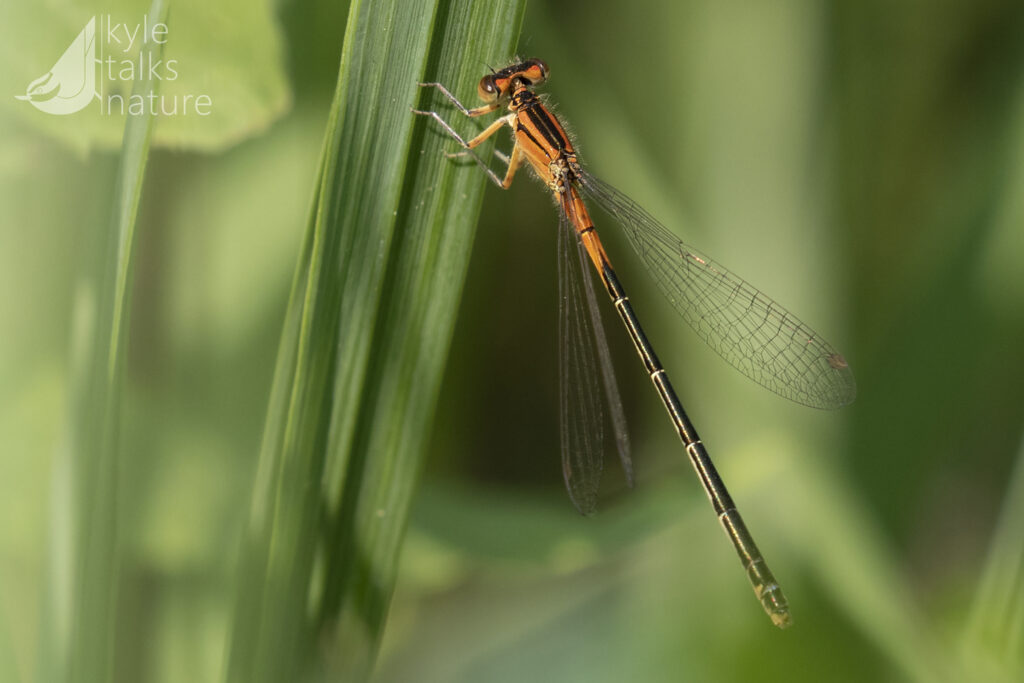
Forktails like Eastern Forktail (above) are likewise abundant in a variety of habitats. Sprites like Sedge Sprite (below) are some of our tiniest damsels and may even be living among the blades of grass in your lawn.
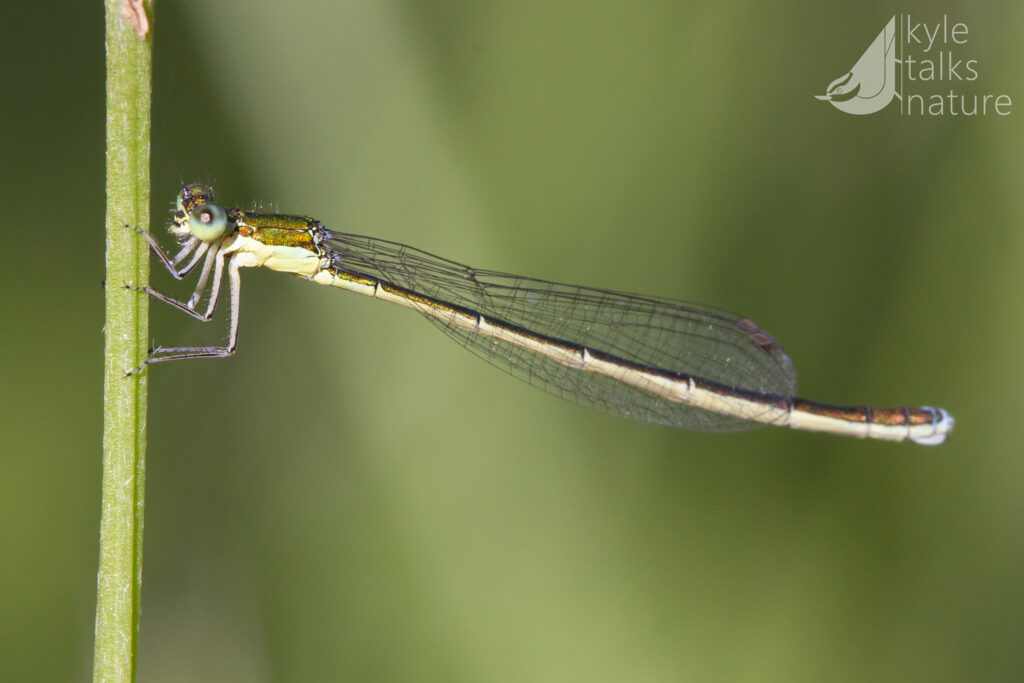
In conclusion…
Holy crap you made it. Here we are at the end, and if you’re not completely turned off dragonflies and damselflies by now, you might just have what it takes. Like basically you’re a total nerd who loves nerd stuff. You get it.
Get out there and see some odes, and we’ll see you back here for part 3.
Resources:
Check out these awesome field guides to help shoehorn you into your new odonate habit!
- The Dragonflies and Damselflies of Algonquin Provincial Park and the Surrounding Area
- Damselflies of the Northeast
- Dragonflies and Damselflies of the East
¹Incidentally butterflies also don’t fold their wings, but it’s not because they’re old. Butterflies come from an ancestor that could fold its wings, but have secondarily evolved not to fold. If there was ever any doubt that butterflies are some high-maintenance garbage…

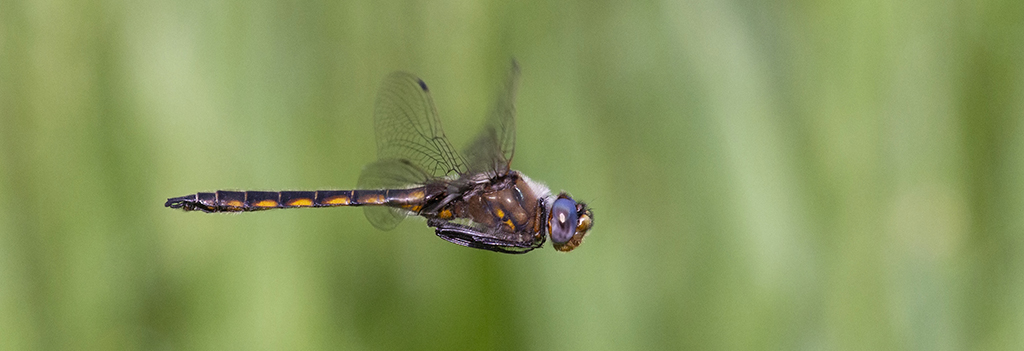
One reply on “Things That Are Like Birds but Aren’t Birds – Part 2”
[…] 1 we looked at how you can project your aimless birdlust onto unsuspecting butterflies. In Part 2 we upped the ante and dived into the deep and complicated world of dragonflies. Here in Part 3 […]